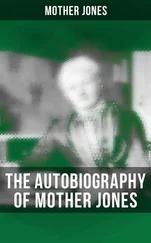Mendel made crosses using many different characters — flower colour, plant height and pea shape — and found that the same ratios applied to each. He also tested the inheritance of pairs of characters considered together. For example, plants with yellow and smooth peas were crossed with others with green and wrinkled peas. His law applied again. Patterns of inheritance of colour were not influenced by those for shape. From this he deduced that separate genes (rather than alternative forms of the same one) must be involved for each attribute. Both for distinct forms of the same trait {yellow or green colour, for example) and for quite different ones (such as colour and shape) inheritance was based on the segregation of physical units. Mendel was the first to prove that offspring are not the average of their parents and that genetics is based on differences rather than similarities.
Biologists since his day have delighted in picking over his results (and accusing him of fraud because they may fit his theories too well). They argue about what he thought his factors were, and speculate about why his work was ignored. Whatever lies behind its long obscurity, Mendel's result was rediscovered by plant breeders in the first year of the twentieth century and was soon found to apply to hundreds of characters in both animals and plants. Mendel had the good luck, or the genius, needed to be right where all his predecessors had been wrong. No science traces its origin to a single individual more directly than does genetics, and Mendel's work is still the foundation of the whole enormous subject which it has become.
Mendel rescued Darwin from his dilemma. A gene for green pea colour or for white skin, rare though it may be, is not diluted by the presence of many copies of genes for other colours. Instead, it can persist unchanged over the generations and will become more common should it gain an advantage.
Soon after the crucial rules were rediscovered they were used to interpret patterns of human inheritance. It is not possible to carry out breeding experiments on our fellow citizens. They would take too lonj;, lor mic tiling. Instead, biologists must rely on the experiments whn.li.ire done as humans go about their sexual business. They use family trees or pedigrees — from the l-'reuch pied de grm; crane's foot, after a supposed resemblance "t the earliest aristocratic pedigrees (which were arranged in concentric circles) to a bird's toes. Some are fanciful, going back to Adam himself, but geneticists usually have fewer generations to play with, although one or two pedigrees do trace back for hundreds of years.
The first was published in 1903. It showed the inheritance of shortened hands and fingers in a Norwegian village. Such fingers ran in families and showed a clear pattern. The trait never skipped a generation. Anyone with short fingers had a parent, a grandparent and so on with the same thing. If an affected person married someone without the abnormality (as most did), about half their children were affected. If any of their normal children married another person with normal hands the character disappeared from that branch of the family.
Thepattern is just what we expect for a dominant character. Only one copy of the damaged DNA (as in the case of yellow pea colour) is needed to show irs effects. Most sufferers, coming as they do from a marriage between a normal and an affected parent, have a single copy of the normal and a single copy of the abnormal form, one fromeither parent. As a result, their own sperm — or eggs — are of two types, half carrying the normal and half the abnormal variant. When they marry, half their children carry a copy of the damaged gene. The chance of any child of a normal and an affected person having short fingers is hence one in two. An unaffected couple never has a child showing the abnormality as neither of them possesses the flawed instruction that makes it.
Other inherited traits do not behave in this simple way. They are recessives. To show the effect, two copies of the inherited factor, one from each parent, are needed. The parents themselves usually each have a single copy and appear quite normal. Most do not know that they are at risk of having an affected child. Sometimes, though, their offspring looks more like.1 distant relative or an ancestor than it does either parent. Me fore Mendel, that pattern was inexplicable. Such children were sometimes called 'throw-backs'. Now we know that they are obeying Mendel's laws. They have, by chance, inherited two copies of a recessive abnormality while their mother and father each have just one.
In Britain, one child in several thousand is an albino, lacking any pigment in eyes, hair or skin. Elsewhere, the anomaly is more common. In some North American Indians, about one person in a hundred and fifty is an albino. According to the Book of Enoch (one of the apocryphal books of the Bible), Noah himself suffered from the condition. If he did, there is not much sign of the gene in his descendants.
The great majority of albino children are born to parents of normal skin colour. They must each have a single copy of the albino factor matched with another copy of that for full pigmentation. Half the father's sperm carry the altered gene. Should one of these fertilise one of that half of his partner's eggs which carry the same thing, then the child willhave two copies of the recessive form and will lack pigment. In a marriage such as this, the chance of any child being an albino is a half times a half. This one in four probability is the same for all the children. It is not the case, as some parents think, that having had one albino child means that the next three are bound to be normal.
Patterns of inheritance in humans can, then, follow the same rules as those found in \ic\s. 1 lowevcr, biology is rarely pure and never simple. Much of Mr- history of human genetics has been a tale of exceptions to Mendel's laws.
For example, variants do noi have 10 In- domin.itii or recessive. In some blood groups, both show their effects. Someone with a factor for group A and group B has Ailblood, which shares the properties of both. At the UNA level, the whole concept of dominance or recessivity goes away. A change in the order of bases can be identified with no difficulty, whether one or two copies are present. Molecular biology makes it possible to see genes directly, rather than having to infer what is going on, as Mendel did, from looking at what they make.
Another result which would have surprised Mendel is that one gene may control many characters. Thus, sickle-cell haemoglobin has all kinds of side-effects. People with two copies may suffer from brain damage, heart failure and skeletal abnormalities (all of which arise from anaemia and from the blockage of blood vessels). In contrast, some characters (such as height or weight) are controlled by many genes. What is more, Mendelian ratios sometimes change because one or other type is lethal, or bears some advantage.
All this (and much more) means that the study of inheritance has become more complicated in the past century and a half. Nevertheless, Mendel's laws apply to humans as much as to any other creature. They are beguilingly simple and have been invoked to explain all conceivable — and some inconceivable — patterns of resemblance. In the early days, long pedigrees claimed to show that outbursts of bad temper were due to a dominant gene and that there were genes for going to sea or for 'drapetomania' — pathological running away among slaves. This urge for simple explanations persists today, but mainly among non-scientists. Geneticists have had their ringers burned by simplicity too often to believe that Mendel ism explains everything.
Mendel had no interest in what his inherited particles were made of or where they might be found. Others began to wonder what they were. In 1909 the American geneticist Thomas Hunt Morgan, looking for a candidate for breeding experiments hit upon the fruit fly. It was an inspired choice and his work, with Drosophila melanogaster (the black-bellied dew lover, to translate its name) was the first step towards making the human gene map.
Читать дальше
Конец ознакомительного отрывка
Купить книгу












